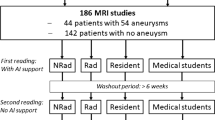Abstract
Recent advances in CT scanner technology and computer hardware have led to the development of CT fluoroscopy (CTF), which allows real-time acquisition and display of cross-sectional images (with a rate of up to 8 frames per second). Since the introduction of the first CT fluoroscopy scanner in 1993, a variety of these scanners have been installed world-wide and many reports on the clinical use of this device have appeared recently. However, use of this new technology for the guidance of interventional radiologic procedures, such as percutaneous biopsy and percutaneous drainage, is not uniformly advocated by interventional radiologists. Concerns have been reported regarding radiation exposure and outcome of the procedures when compared with sequential CT guidance or other alternative guiding modalities. This article is intended to present an overview of CTF technology, to summarize the results of published papers on various interventional applications and to reflect on its specific advantages and disadvantages.
Similar content being viewed by others
Author information
Authors and Affiliations
Rights and permissions
About this article
Cite this article
Froelich, J., Wagner, HJ. CT-Fluoroscopy: Tool or Gimmick?. Cardiovasc Intervent Radiol 24, 297–305 (2001). https://doi.org/10.1007/s00270-001-0042-6
Published:
Issue Date:
DOI: https://doi.org/10.1007/s00270-001-0042-6




